Despite the poor living conditions at Theresienstadt, the camp had a vibrant cultural life. Many exceptional Jewish artists, writers, poets, actors, and musicians resided there and hosted shows, readings, and performances. Lotte’s archive includes a variety of artistic items produced at Theresienstadt, both by professional artists and amateurs, and provides examples of some of the artwork from this time of despair.
Art
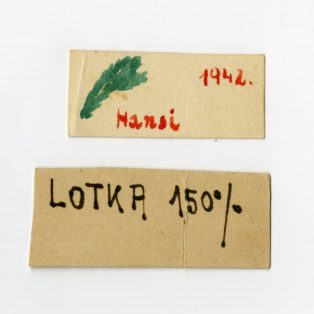
Place Setting, 1942
Place setting from an improvised dinner on Christmas, 1942. Lotte and her friends didn’t have tables, so they sat on the floor.
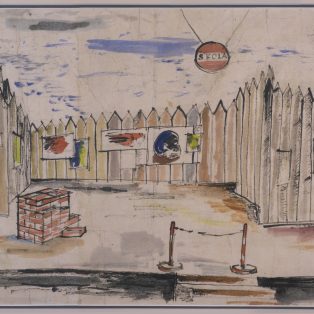
Set Design of Brundibar Opera, 1943
Surviving sketch of a set design for Hans Krasa’s Brundibar opera (dated ’43 in lower right corner). The play was performed more than 50 times in Theresienstadt, though almost all of its performers, most of them children, were murdered. In early summer, 1944, prior to a visit by the Red Cross, Reich Minister of Propaganda…
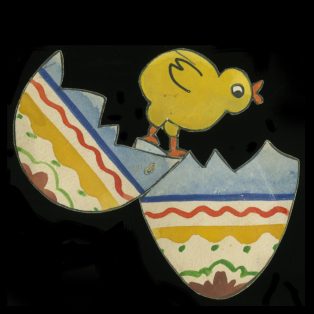
Paper Easter Egg, April 1943
Made by mothers working in the Jewish kindergarten.
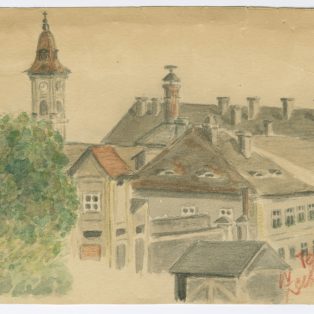
Watercolor of Theresienstadt
Given to Lotte on her birthday in 1943 or 1944 by her barrack mates.
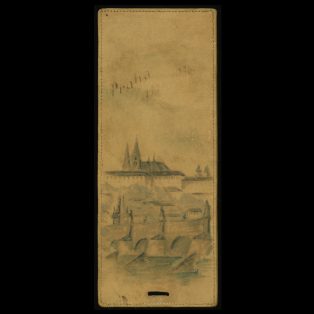
Leather Bookmark and Pendant, 1944
6th wedding anniversary gift. The bookmark shows Lotte and Ernest’s two homes: Prague (1938) and Theresienstadt (1944), while the pendant contains both of their names.
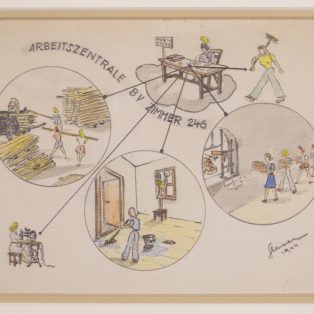
Women’s Work in Theresienstadt, 1944
This sketch depicts a mobile work unit in Theresienstadt, and shows some common examples of women’s work in the camp. The German text reads “Central Labor Office BV Room 246.”